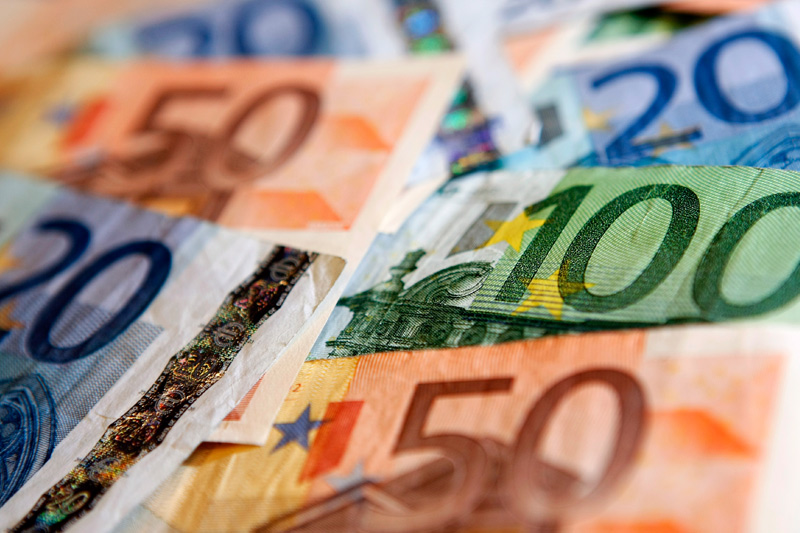Investing.com’s stocks of the week
Investing.com - The euro pushed higher against the U.S. dollar on Tuesday, supported by expectations that a German court would rule in favor of the legality of the euro zone’s bailout fund on Wednesday.
During European late morning trade, the euro was hovering close to a four-month high against the U.S. dollar, with EUR/USD up 0.26% to 1.2791.
Demand for the shared currency was bolstered by expectations that the German constitutional court would find that the European Stability Mechanism was not a violation of the German constitution in a ruling on Wednesday.
Earlier Tuesday, the court rejected an application by a German MP to postpone the ruling until the European Central Bank altered its bond-buying program.
Meanwhile, the greenback remained under broad selling pressure amid speculation that the Federal Reserve may implement a third round of quantitative easing after its policy meeting which concludes on Thursday.
The single currency was fractionally higher against the pound, with EUR/GBP inching up 0.04% to 0.7983.
The pound found support after official data showed that the U.K. goods trade deficit narrowed unexpectedly in July, as exports to countries outside of the European Union jumped to a record high.
The Office for National Statistics said the goods trade deficit contracted to GBP7.14 billion in July, from GBP10.06 billion in June, compared to expectations for a deficit of GBP11.8 billion.
The euro was little changed against the yen and the Swiss franc, with EUR/JPY dipping 0.07% to 99.80 and EUR/CHF inching down 0.06% to 1.2066.
The shared currency was broadly lower against the Australian, New Zealand and Canadian dollars, with EUR/AUD slipping 0.16% to 1.2327, EUR/NZD down 0.29% to 1.5725 and EUR/CAD losing 0.13% to trade at 1.2457.
Portugal was to announce the details of the latest review of its EUR78 billion bailout program later Tuesday. The country has so far managed to achieve the targets set out by the Troika but evidence of a recent slowdown in economic growth could hamper planned austerity measures.
During European late morning trade, the euro was hovering close to a four-month high against the U.S. dollar, with EUR/USD up 0.26% to 1.2791.
Demand for the shared currency was bolstered by expectations that the German constitutional court would find that the European Stability Mechanism was not a violation of the German constitution in a ruling on Wednesday.
Earlier Tuesday, the court rejected an application by a German MP to postpone the ruling until the European Central Bank altered its bond-buying program.
Meanwhile, the greenback remained under broad selling pressure amid speculation that the Federal Reserve may implement a third round of quantitative easing after its policy meeting which concludes on Thursday.
The single currency was fractionally higher against the pound, with EUR/GBP inching up 0.04% to 0.7983.
The pound found support after official data showed that the U.K. goods trade deficit narrowed unexpectedly in July, as exports to countries outside of the European Union jumped to a record high.
The Office for National Statistics said the goods trade deficit contracted to GBP7.14 billion in July, from GBP10.06 billion in June, compared to expectations for a deficit of GBP11.8 billion.
The euro was little changed against the yen and the Swiss franc, with EUR/JPY dipping 0.07% to 99.80 and EUR/CHF inching down 0.06% to 1.2066.
The shared currency was broadly lower against the Australian, New Zealand and Canadian dollars, with EUR/AUD slipping 0.16% to 1.2327, EUR/NZD down 0.29% to 1.5725 and EUR/CAD losing 0.13% to trade at 1.2457.
Portugal was to announce the details of the latest review of its EUR78 billion bailout program later Tuesday. The country has so far managed to achieve the targets set out by the Troika but evidence of a recent slowdown in economic growth could hamper planned austerity measures.
